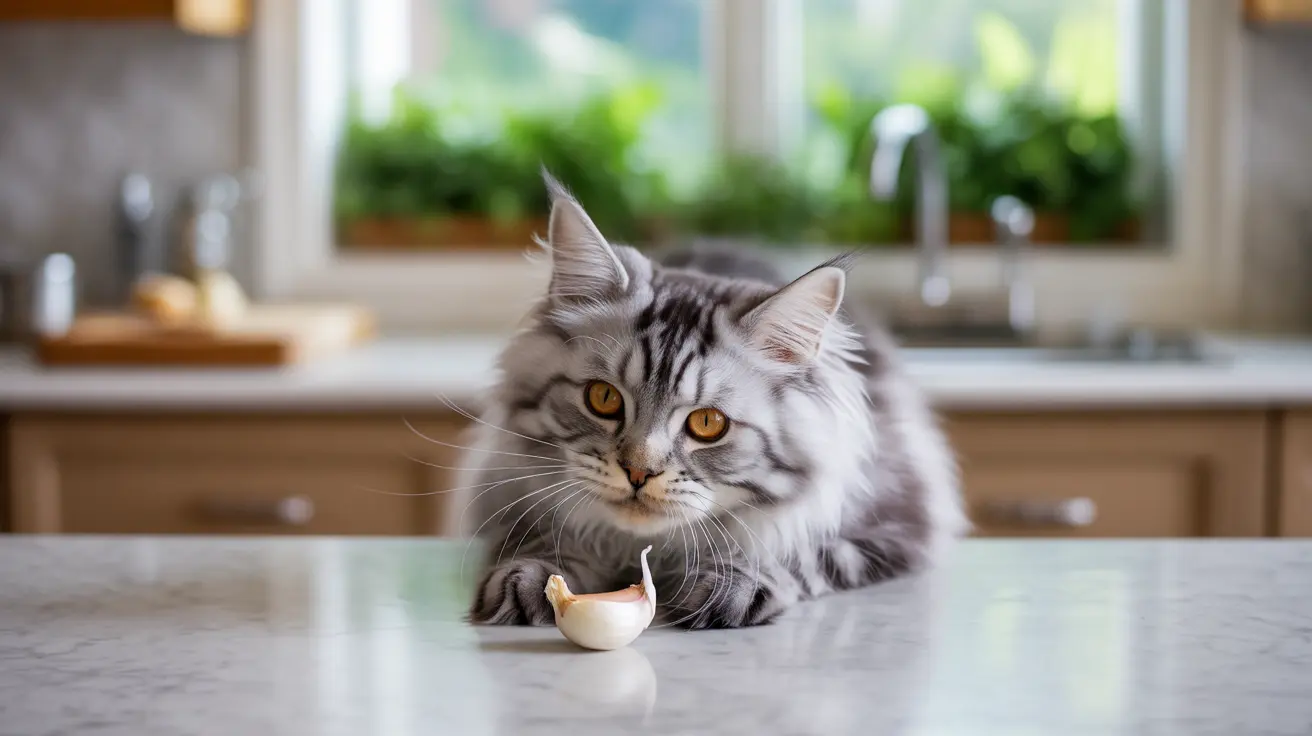Understanding Garlic Toxicity in Cats
When it comes to garlic and cats, there's a crucial fact every pet owner needs to know: even small amounts of garlic can be extremely dangerous for felines. Garlic contains compounds called thiosulfates that can cause severe damage to a cat's red blood cells, potentially leading to life-threatening anemia.
As a member of the Allium family (along with onions, chives, and leeks), garlic is particularly toxic to cats - approximately five times more toxic than onions. Understanding exactly how much garlic is toxic to cats could mean the difference between life and death for your feline companion.
Toxic Amounts: Even Small Doses Can Be Dangerous
For an average-sized cat weighing 10-12 pounds, consuming less than one small clove of garlic (4-7 grams) can result in severe toxicity. To put this in perspective, even these minimal amounts can be dangerous:
- Less than 1/2 teaspoon of minced garlic
- Less than 1/8 teaspoon of garlic powder
- A small amount of sauce or food containing garlic
The concentration of toxic compounds can vary based on the form of garlic, with dried and powdered forms being particularly potent due to their concentrated nature.
Signs of Garlic Poisoning in Cats
Garlic poisoning symptoms may not appear immediately, often developing between 6 hours to 5 days after ingestion. Watch for these warning signs:
Initial Symptoms (6-24 hours):
- Vomiting
- Diarrhea
- Drooling
- Loss of appetite
- Abdominal pain
Later Symptoms (1-5 days):
- Pale or yellowish gums
- Weakness and lethargy
- Rapid breathing or heart rate
- Dark-colored urine
- Collapse in severe cases
Emergency Response and Treatment
If you suspect your cat has consumed any amount of garlic, immediate veterinary attention is crucial. Do not wait for symptoms to appear, as early intervention can significantly improve outcomes. The veterinarian may:
- Induce vomiting (if ingestion was recent)
- Administer activated charcoal
- Provide supportive care through IV fluids
- Monitor blood cell counts
- Perform blood transfusions if necessary
Prevention and Safety Measures
To protect your cat from garlic toxicity, implement these essential precautions:
- Keep all forms of garlic securely stored away from cats
- Never feed human food containing garlic to cats
- Check ingredient labels carefully
- Inform family members and house guests about the dangers
- Store cleaning supplies containing garlic away from curious cats
Frequently Asked Questions
How much garlic is toxic to cats and can even small amounts cause poisoning?
Less than one clove of garlic can be toxic to cats. Even tiny amounts like 1/8 teaspoon of garlic powder can cause dangerous reactions in cats due to their heightened sensitivity to garlic's toxic compounds.
What are the common symptoms of garlic poisoning in cats and how soon do they appear?
Symptoms typically begin with gastrointestinal issues like vomiting and diarrhea within 6-24 hours. More severe symptoms, including pale gums and weakness, may appear 1-5 days after ingestion.
Can cooked or powdered garlic be harmful to my cat, or is it only raw garlic that is toxic?
All forms of garlic - raw, cooked, dried, or powdered - are toxic to cats. Powdered garlic can be especially dangerous due to its concentrated nature.
What should I do if I suspect my cat has eaten garlic or food containing garlic?
Contact your veterinarian or animal poison control immediately. Don't wait for symptoms to appear or attempt home treatments. Quick professional intervention is essential for the best outcome.
Is garlic ever safe to use as a home remedy for cats, such as for flea control?
No, garlic is never safe for cats in any amount or for any purpose. The myth about garlic as a flea treatment is dangerous and unfounded. Always use veterinarian-approved flea treatments instead.






